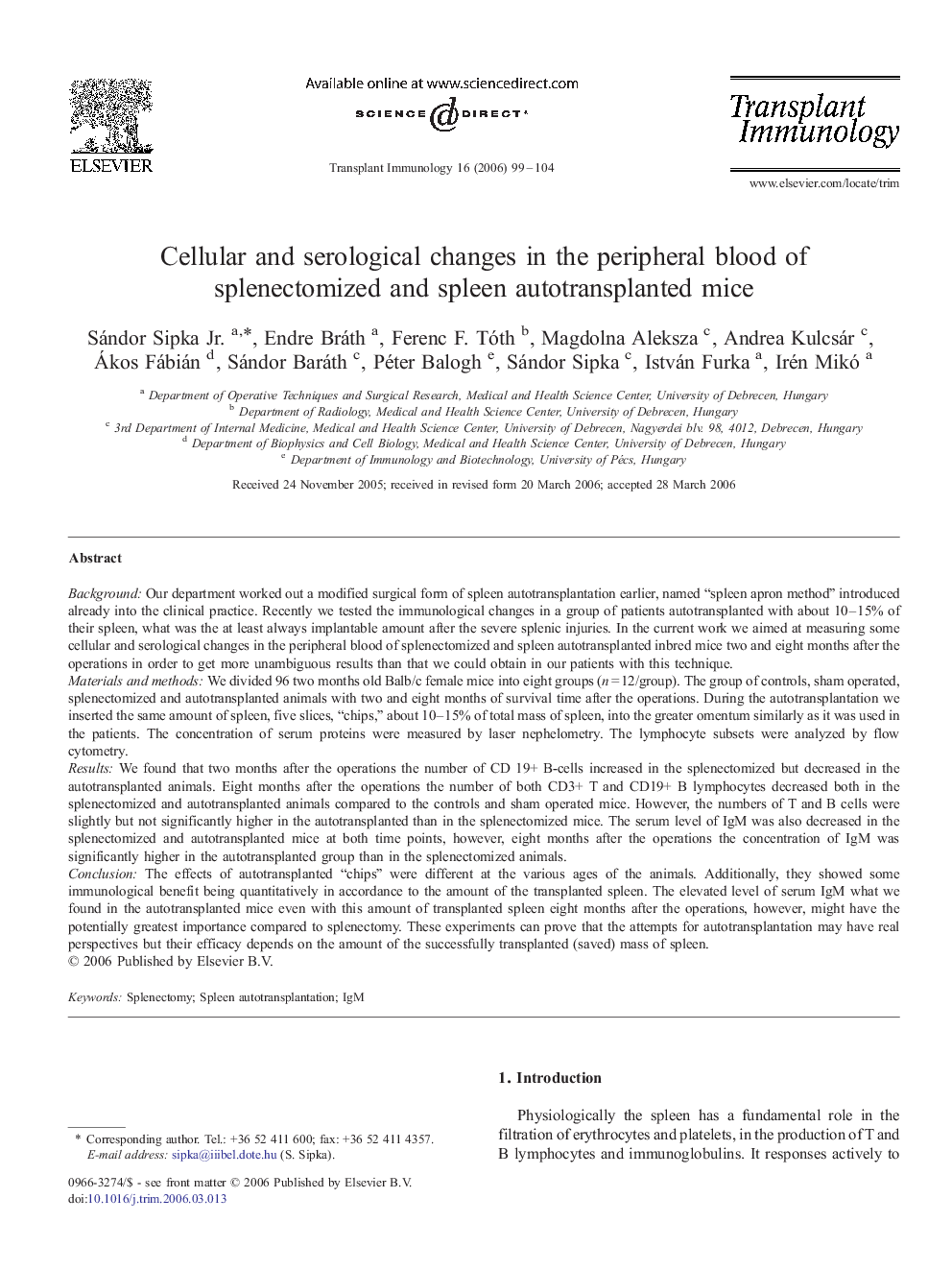| Article ID | Journal | Published Year | Pages | File Type |
|---|---|---|---|---|
| 3392559 | Transplant Immunology | 2006 | 6 Pages |
BackgroundOur department worked out a modified surgical form of spleen autotransplantation earlier, named “spleen apron method” introduced already into the clinical practice. Recently we tested the immunological changes in a group of patients autotransplanted with about 10–15% of their spleen, what was the at least always implantable amount after the severe splenic injuries. In the current work we aimed at measuring some cellular and serological changes in the peripheral blood of splenectomized and spleen autotransplanted inbred mice two and eight months after the operations in order to get more unambiguous results than that we could obtain in our patients with this technique.Materials and methodsWe divided 96 two months old Balb/c female mice into eight groups (n = 12/group). The group of controls, sham operated, splenectomized and autotransplanted animals with two and eight months of survival time after the operations. During the autotransplantation we inserted the same amount of spleen, five slices, “chips,” about 10–15% of total mass of spleen, into the greater omentum similarly as it was used in the patients. The concentration of serum proteins were measured by laser nephelometry. The lymphocyte subsets were analyzed by flow cytometry.ResultsWe found that two months after the operations the number of CD 19+ B-cells increased in the splenectomized but decreased in the autotransplanted animals. Eight months after the operations the number of both CD3+ T and CD19+ B lymphocytes decreased both in the splenectomized and autotransplanted animals compared to the controls and sham operated mice. However, the numbers of T and B cells were slightly but not significantly higher in the autotransplanted than in the splenectomized mice. The serum level of IgM was also decreased in the splenectomized and autotransplanted mice at both time points, however, eight months after the operations the concentration of IgM was significantly higher in the autotransplanted group than in the splenectomized animals.ConclusionThe effects of autotransplanted “chips” were different at the various ages of the animals. Additionally, they showed some immunological benefit being quantitatively in accordance to the amount of the transplanted spleen. The elevated level of serum IgM what we found in the autotransplanted mice even with this amount of transplanted spleen eight months after the operations, however, might have the potentially greatest importance compared to splenectomy. These experiments can prove that the attempts for autotransplantation may have real perspectives but their efficacy depends on the amount of the successfully transplanted (saved) mass of spleen.
